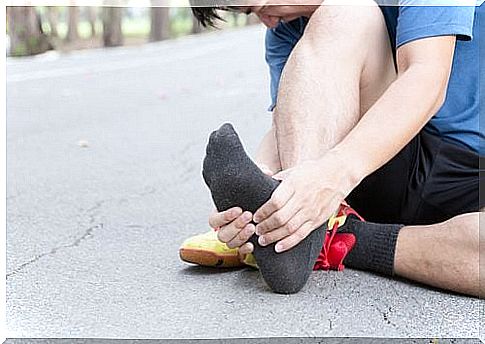Symptoms Of Plantar Fasciitis, Causes And Treatment

Plantar fascitiis is inflammation of the plantar fascia of the foot. It is a tendon band that connects the heel to the front bones and stretches and contracts at each step, like an elastic band. Today we will talk about symptoms of plantar fasciitis, causes and treatment!
Plantar fasciitis
Plantar fascia is a very wide and thick tissue due to the enormous pressure and resistance it must support.
Inflammation of this band manifests itself with pain in the area around the heel. It is one of the most common causes of pain in this area.
People at higher risk for this problem are athletes, especially amateurs.
Risk factors
- Sports with repetitive movements
- Overload
- Conditions such as rheumatoid arthritis and diabetes
- Improper footwear
- Flat feet
- Older age
- Obesity
- Hormonal changes
What does this condition look like?
Overuse of the plantar fascia ends up causing microscopic trauma to the tissue. Repeated small tears lead to inflammation of the ligament, which causes pain in the heel.
In other words, it is a chronic disorder since it does not show up overnight but rather as a result of repeated injuries.
Causes of plantar fasciitis
Damage to the fascia can occur for many different reasons; it has many varied factors including environment, posture and genes.

There are also factors that seriously aggravate the pain, such as using incorrect footwear, having poor posture, overuse of the area, inflexibility in the related muscles and overload.
Repetitive physical activity
Excessive exercise is the main cause of plantar fasciitis.
Physical activity such as running or jumping for a long time overloads the tendon so that it is not able to cope with so much wear and tear. In addition , changes in training plans without doing so can gradually cause more serious fractures and thus worse pain.
Runners, football players and people who play badminton or tennis have the highest risk.
Foot anatomy
There are several anatomical structures that play a role in any overload of the plantar fascia.
The Achilles tendon is a tendon that connects the gastrocnemius muscles, better known as the calf muscles, and the soleus muscles with the heel. A contraction of the Achilles tendon triggers an increase in pressure on the heel, with the resulting increase in pressure on the plantar fascia.

Another factor to keep in mind around the anatomical structure is the stretch of the foot, or in other words, how the foot hits the ground. Flat feet or feet with a tendency to overpronate stretch the plantar fascia more, thus increasing the risk of fracture due to the extra pressure on the tissue.
Symptoms of plantar fasciitis and related conditions
Rheumatoid arthritis and diabetes are considered risk factors for plantar fasciitis, as both can cause inflammation of the tendons.
People of older age tend to experience this pain as a result of one of these two conditions.
The type of footwear
Often people do not wear footwear that fits properly. Or the sole is not supportive enough or is bad at distributing the weight effectively.
Constant use of bad footwear ends up irritating the plantar fascia, as well as causing other problems with the feet. High heels are a big fy-word when it comes to plantar fasciitis.
Symptoms of pain in plantar fasciitis
- Worse in the morning
- Chronic
- Teasing or burning pain
- Progressive
The pain tends to be worse in the morning because the foot is kept stiff all night, and decreases during the day as the foot is stretched out and the tissues warm up.
In some cases, the pain becomes unbearable and even affects the bones, preventing movement such as moving the toes up and down.

Plantar fasciitis is often associated with the presence of bone spurs, although it is not a crucial factor.
When the plantar fascia is prolonged for a long time or is not treated properly, the person may see changes in their gait, leading to problems and pain in the knees, back and neck.
Treatment of plantar fasciitis
- Physical therapy
- NSAID
- Proper footwear
- Corticosteroids
- Orthoses
- Function tape
- Hangers
During treatment, it is important to refrain from exercise as it aggravates the problem, but extension of the soleus and gastrocnemius should be performed during the day.
Some professionals recommend using a splint at night or while resting to keep the fascia stretched out.
Last resort for treatment includes shock wave therapy or surgery. The latter is only for serious and chronic cases of plantar fasciitis.
The improvement process varies for each patient.
Do you show symptoms of plantar fasciitis? Then you now have a solution.









